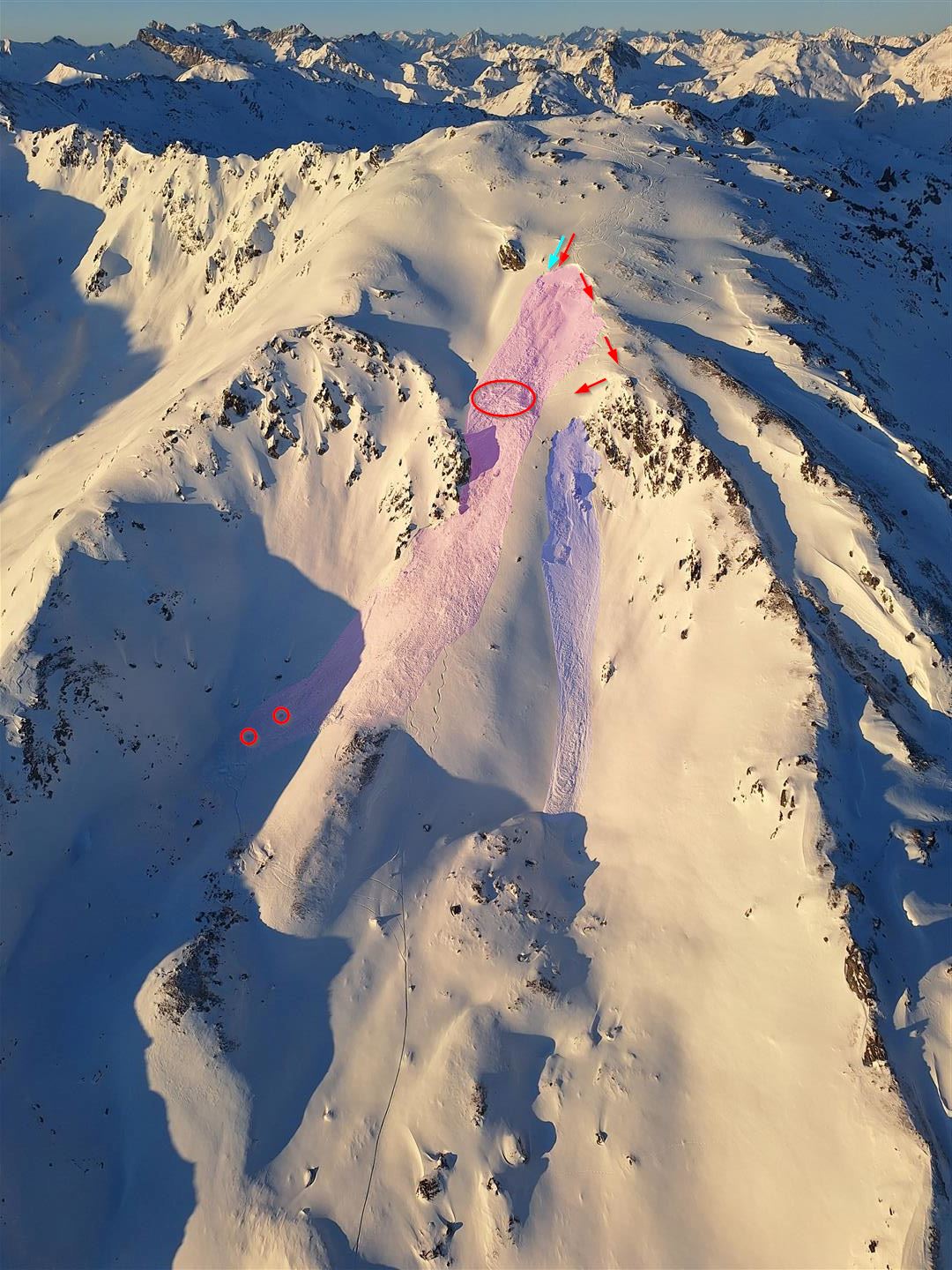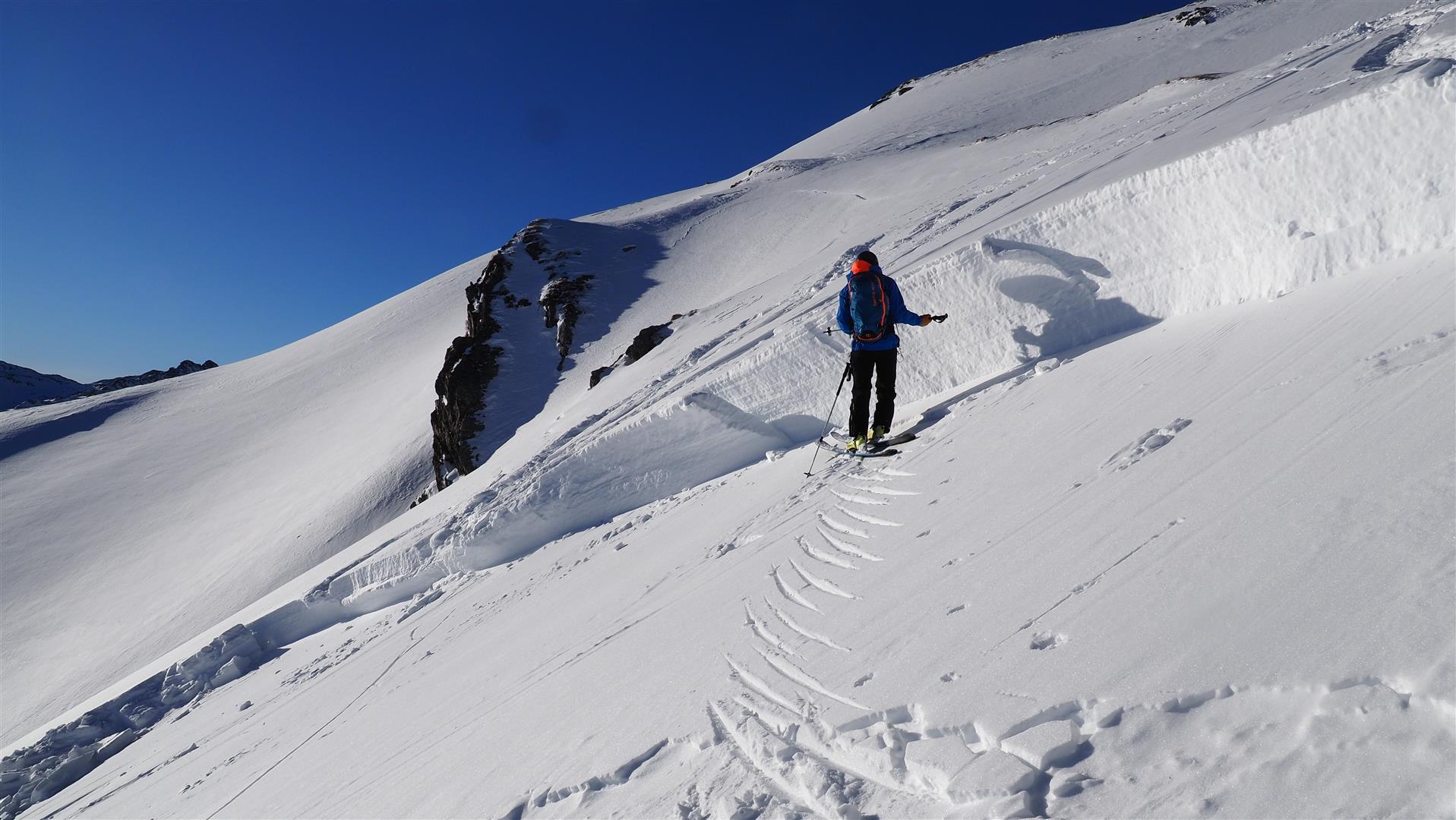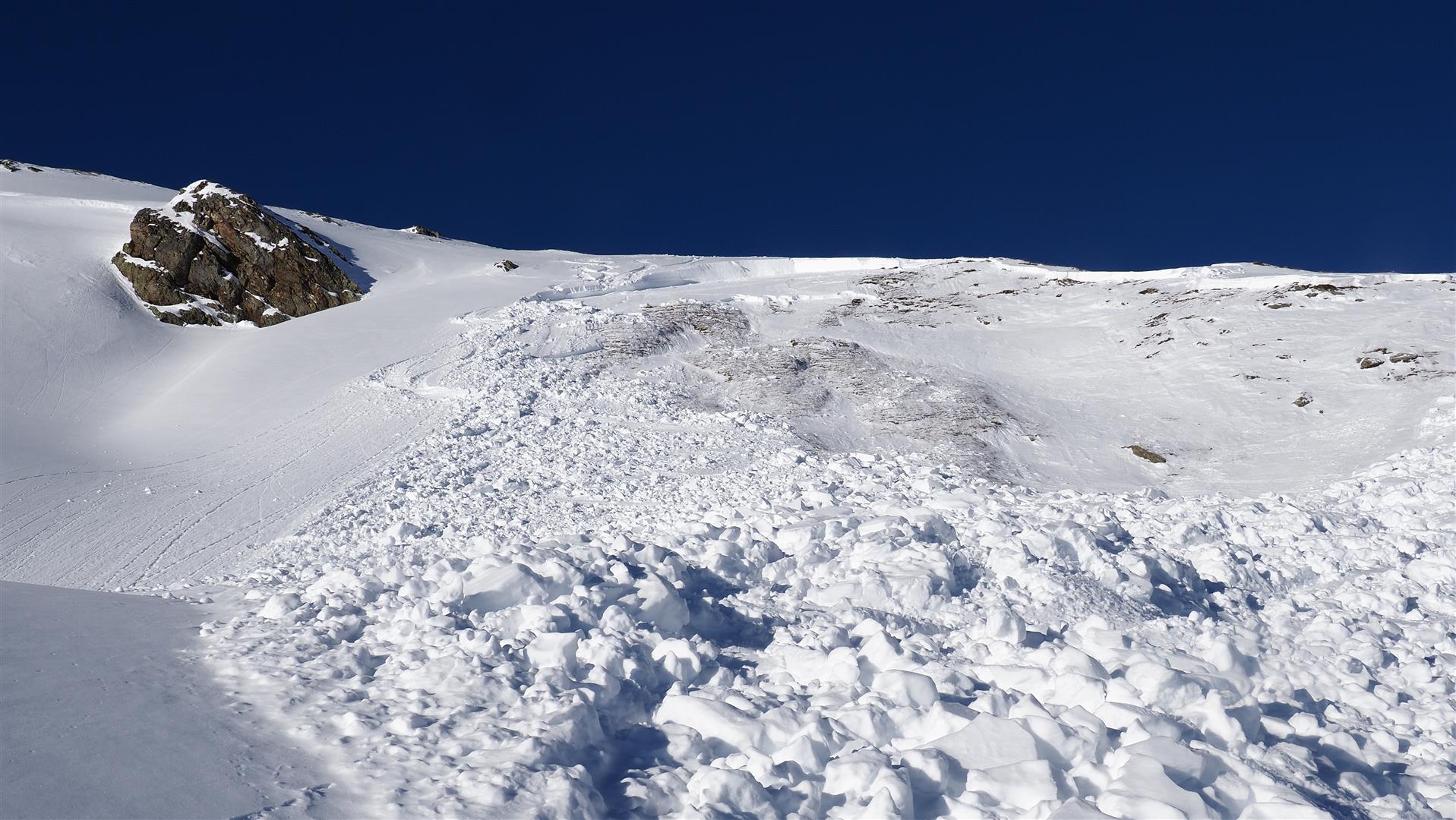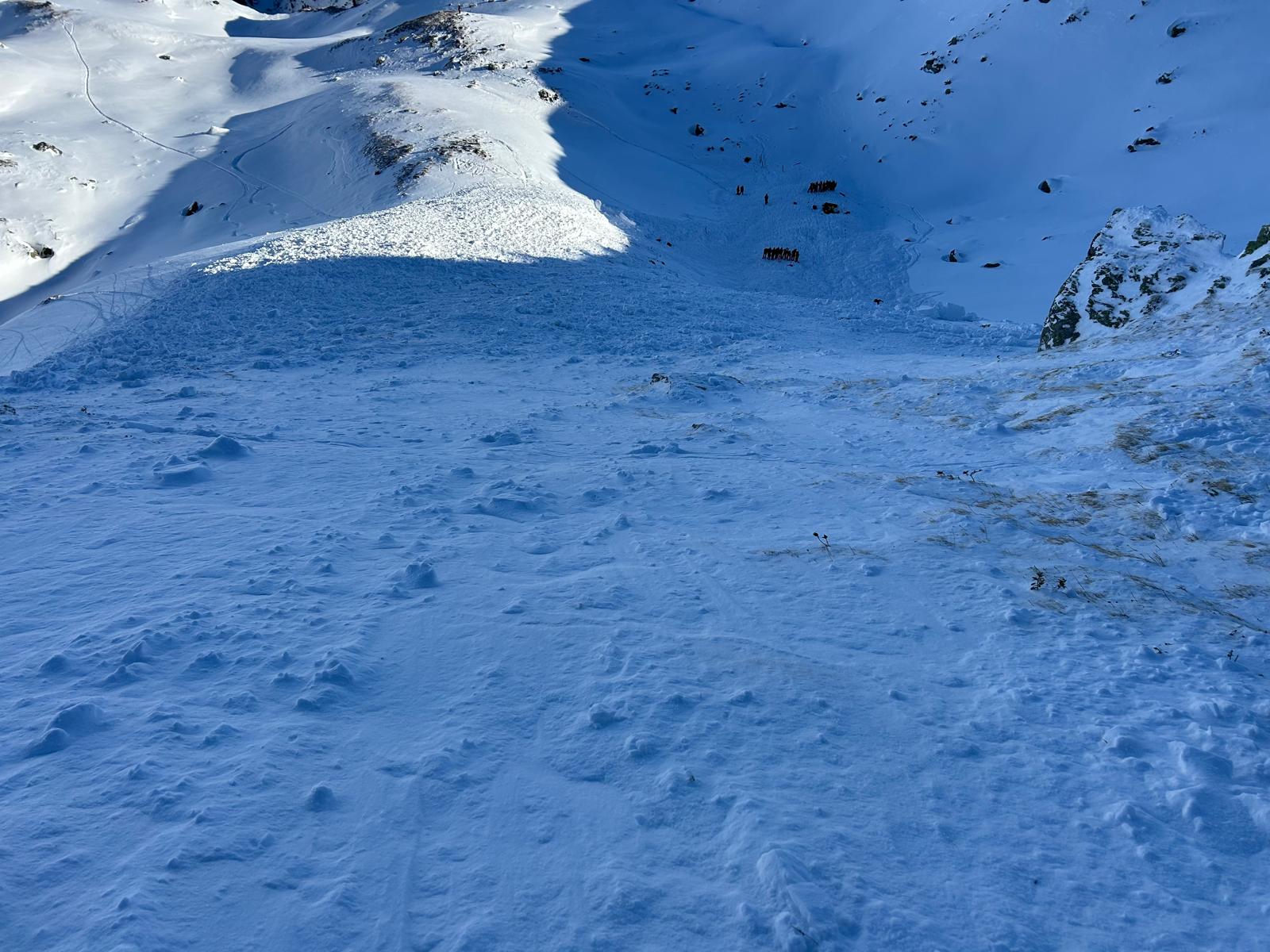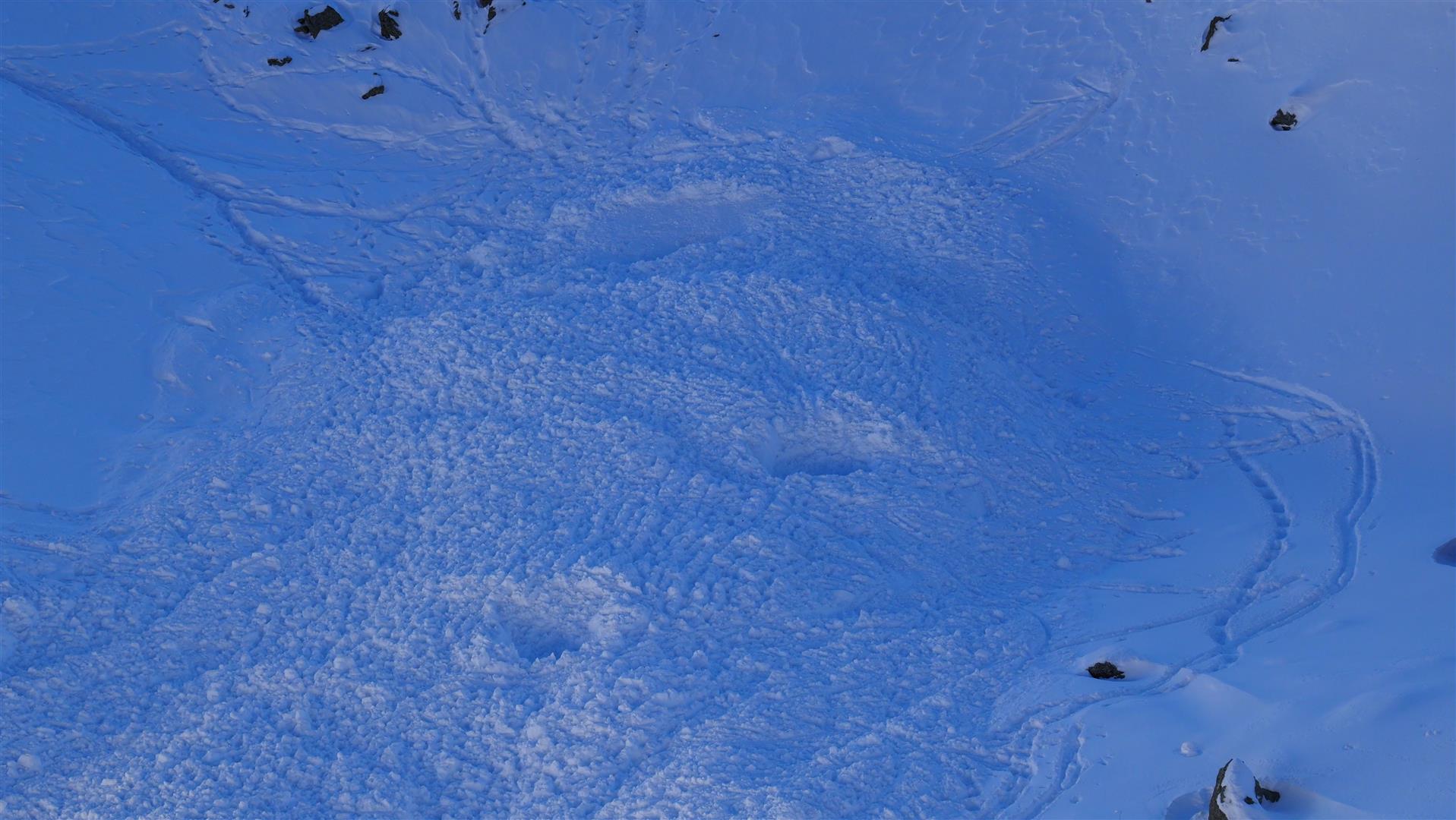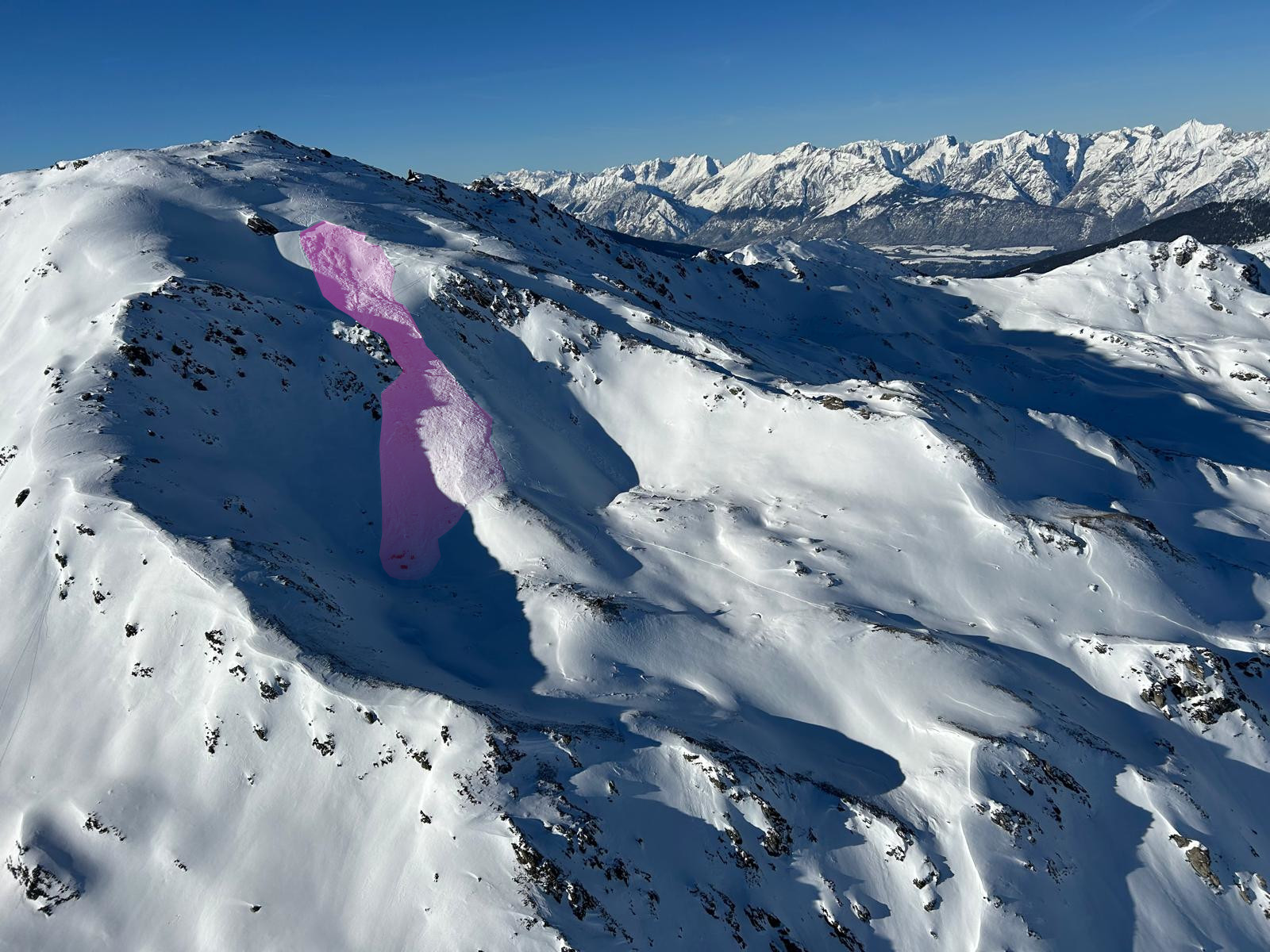On Thursday, 26.12.2024, two persons died in an avalanche incident on the Rosskopf in the eastern Tux Alps. The cause of the incident was a persistent weak layer together with the recently generated snowdrift accumulations deposited on top of it.
Circumstances of the incident
On 26.12.2024 two groups, independent of one another, were on the summit of the Rosskopf in the eastern Tux Alps. One group consisted of 2 winter sports enthusiasts, the other group of 4 winter sports enthusiasts. The second group departed first from the 2576m summmit singly over the 35° steep east facing slope below the summit without triggering an avalanche. The group of four followed, skiing from the uppermost edge of the slope into the same slope, pausing to wait for each following skier at a flat spot. From there, they continued the descent, during which a slab avalanche triggered. One of the skiers was outside the plummet path, another was able to escape, the other two skiers were caught and completely buried in snow.
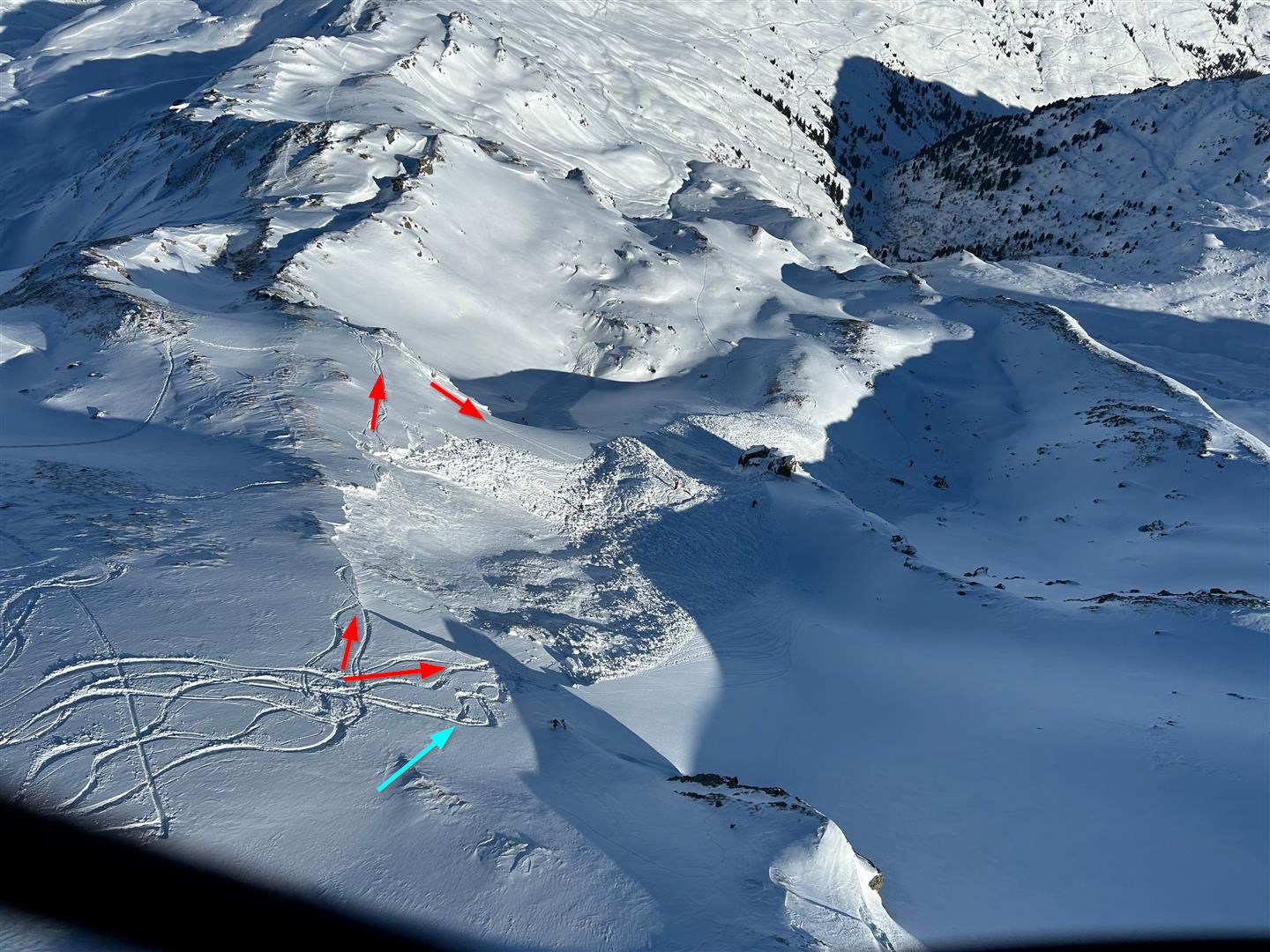
The two utterly buried persons, father and son, were found and dug out by the search operation only after they had lost their lives as a result of lacking emergency equipment.
Snowpack analysis
Together with the Alpine Police and the chief of the rescue operation, we were at the scene on 27.12 in order to analyze what had happened. Our snowpack analysis confirmed the persistent weak layer problem we knew about in this region. Near ground level, at least two weak layers of loose, faceted crystals were identified as the cause of the incident. On top of those was denser snow which had mostly fallen as of 19.12 accompanied by heavy wind impact. This snow formed the slab for the slab avalanche.
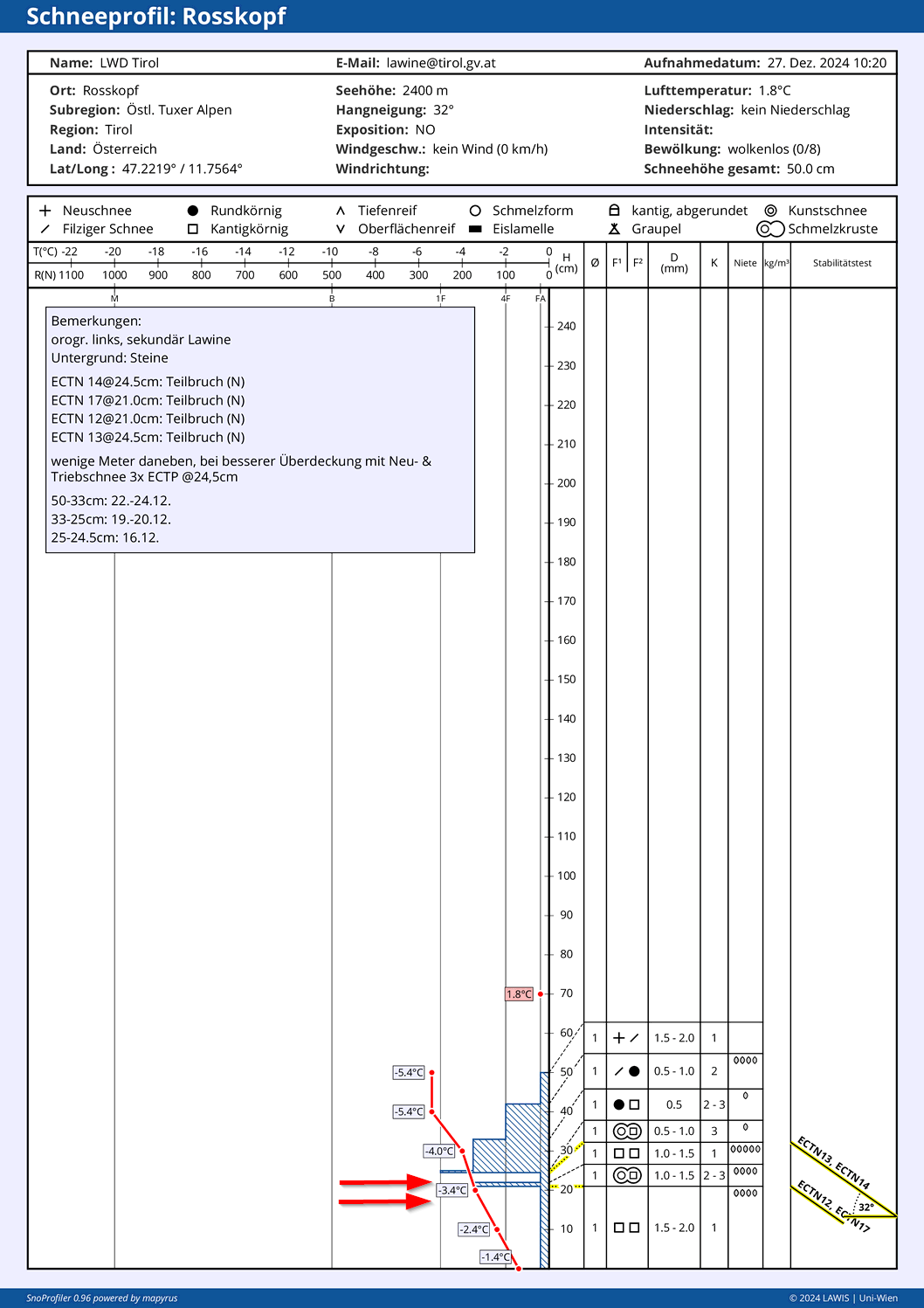
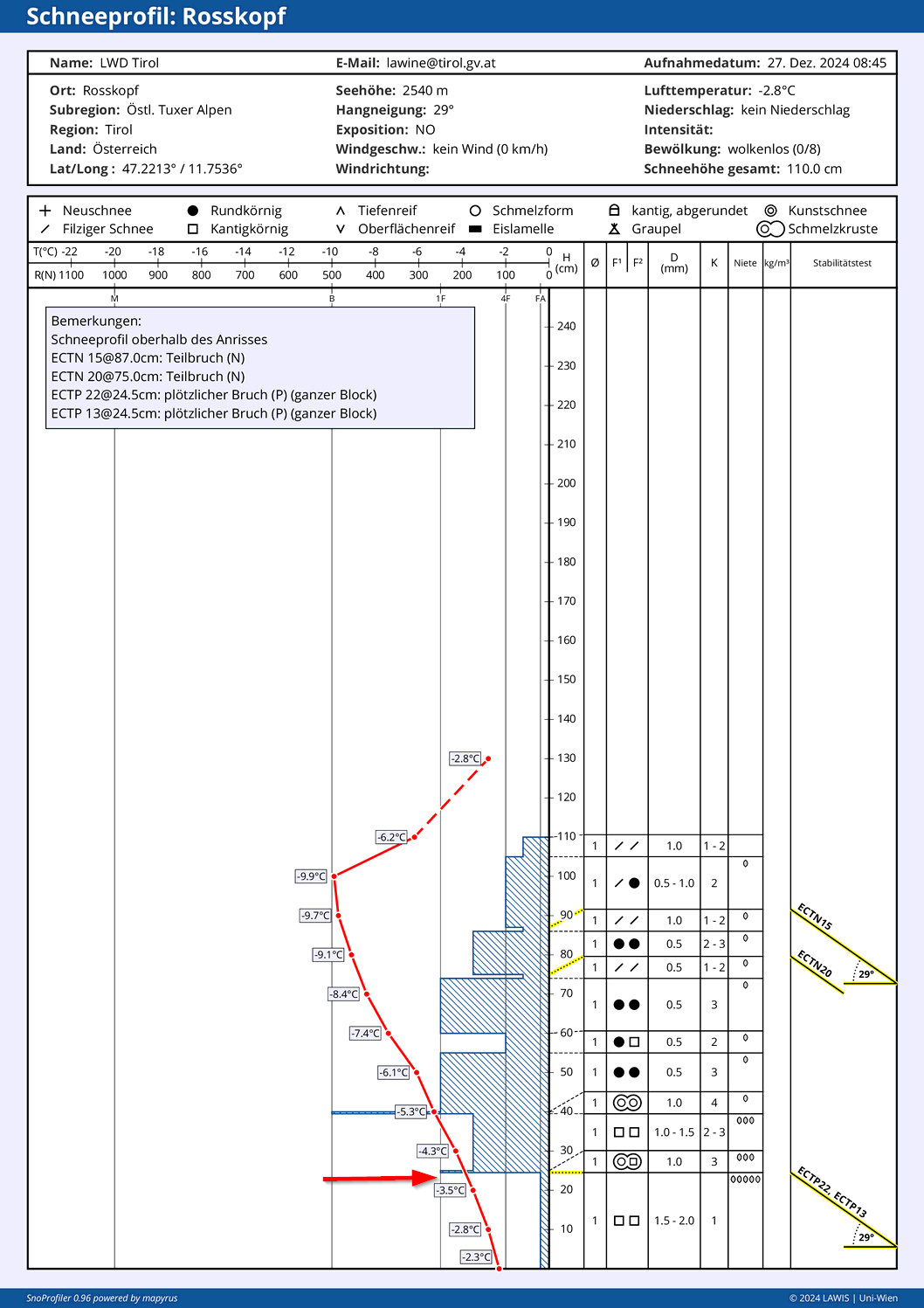
Other snow profiles, also of other areas, can be found here.
The avalanche
This was a slab avalanche. It triggered on a very steep, east-facing slope at 2500m. The slab avalanche was 300m long and 60m wide. The depth of the fracture varied between 30cm and 130cm. Through the unleashing of the slab avalanche, a secondary slab avalanche was also triggered on the orographically left side, an indicator of an area-wide weak layer in this zone.
